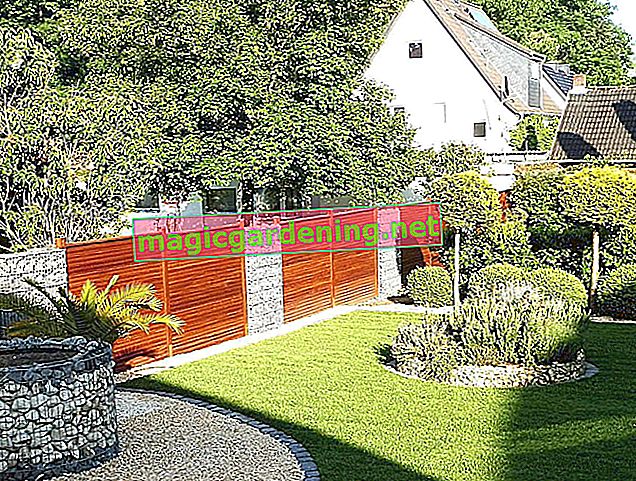
Slope reinforcement determines the style - this is how it works
In the professional garden design on the slope, the slope reinforcement is a key function. Only when the slope is sufficiently stabilized, the planting plan and ideas for the beautification can be tackled. Terracing on several levels creates space for flower and perennial beds, the vegetable garden and a lawn as a playground for the children. The materials and design of the slope reinforcement dictate the style:
- Limestone retaining walls and stairs create a Mediterranean flair
- Boulders along the embankment and natural stones as paving stones go well with the natural garden
- Slope reinforcement with gabions underlines the modern garden style
also read
- Designing a beautiful small garden - tips for successful planning
- Make the front garden beautiful and safe with a hillside location - you should pay attention to this
- Design the flowerbed on a slope sensibly
As a rule of thumb, the steeper the slope, the more mass is required to secure the slope. The heavyweight wall, the foot of which is a third of the height, is considered the queen of slope reinforcements. A dry stone wall made of natural stone is suitable for a small embankment below 100 cm in height. If you design a garden on a slope with gabions, ideally stack several metal baskets on top of each other with a slight incline towards the embankment.
Tips for creative garden design on the slope
A hillside garden is predestined for a stream that flows into a pond on the lower level. For the family garden, the installation of a long slide for your children is absolutely essential. By planting each terrace along the embankment individually, a paradise of ornamental and useful plants is created. The following recommendations may serve as inspiration:
- In the sunny, upper part of the slope near the house, create the vegetable and herb garden
- In addition to the terrace at the house, plan additional seats on the lower levels
- In beds with a slight incline, settle sturdy trees and shrubs with a strong root system
- Plant a sunny embankment with ground cover roses, cushion bluebells and bergenias
Planting on cool, damp northern slopes is more problematic because light is in short supply here. For such locations, we recommend planting ivy, privet and autumn anemones. Numerous ornamental grasses show their most beautiful side even in low-light locations, such as mushroom-head sedges or white-colored flat-ear grass.
Tips
In a garden on a slope, the right lighting makes a significant contribution to safety. When designing paths and stairs, integrate spotlights and lamps into the planning at all steps and possible stumbling blocks. If supply lines and lighting fixtures can be installed in advance, this foresight significantly reduces costs.








